Geoducks. Startups. Grunge bands. Coffee. These are the attractions—and exports—for which Seattle is most celebrated, along with its well-earned reputation for embracing the weird. Of course, the frequent rain and mild temperature also have their place in the region’s storied identity, providing chefs and diners with a uniquely lush selection of produce year-round. Yet beyond the beloved satsumas, salmon and rainier cherries, Seattle chefs are beginning to discover a more mainstream luxury in their backyard: truffles.
Europeans have hunted truffles for more than five hundred years, with the desire for these fragrant tubers spiking considerably in the late eighteenth century. Since then, truffles have been discovered or cultivated in such far-fetched locales as the Southern Highlands of Australia and hazelnut orchards of Tennessee, but the Italian white Alba and French black Perigord remain the most widely celebrated—and expensive—truffles in the market.
Pacific Northwest truffles were first discovered in Oregon, and are thus referred to as Oregon White (tuber oregonense) and Oregon Black (leucangium carthusianum) truffles. Initially, these fragrant tubers were harvested through the practice of raking. Quite literally, one would use a specially designed rake to disturb the earth in fungi-prone environments to reveal potential truffles that lurked beneath the dirt. Unfortunately, this blanket approach failed to differentiate between ripe and unripe truffles, leading chefs and diners to develop a mixed opinion of the local tubers’ potential to rival the European varieties.
The best way to counteract this miseducation of eaters? Ensuring that only the ripest truffles are harvested. Which brings us to Stella: a three-year-old Lagotto Romagnolo, the preferred man’s-best-friend of Italian truffle hunters. Born to two purebred European parents and trained by Sunny Diaz, a Washington truffle-enthusiast turned part-time forager, Stella has already sourced truffles for some of the country’s finest chefs. (The pair also host private hunts for the truffle-curious from October through March as an AirBnB Experience.) That’s how the Life & Thyme team found ourselves in the mountains about an hour east of Seattle, following Stella’s neon orange leash through the almost tropical, vivid greenery.

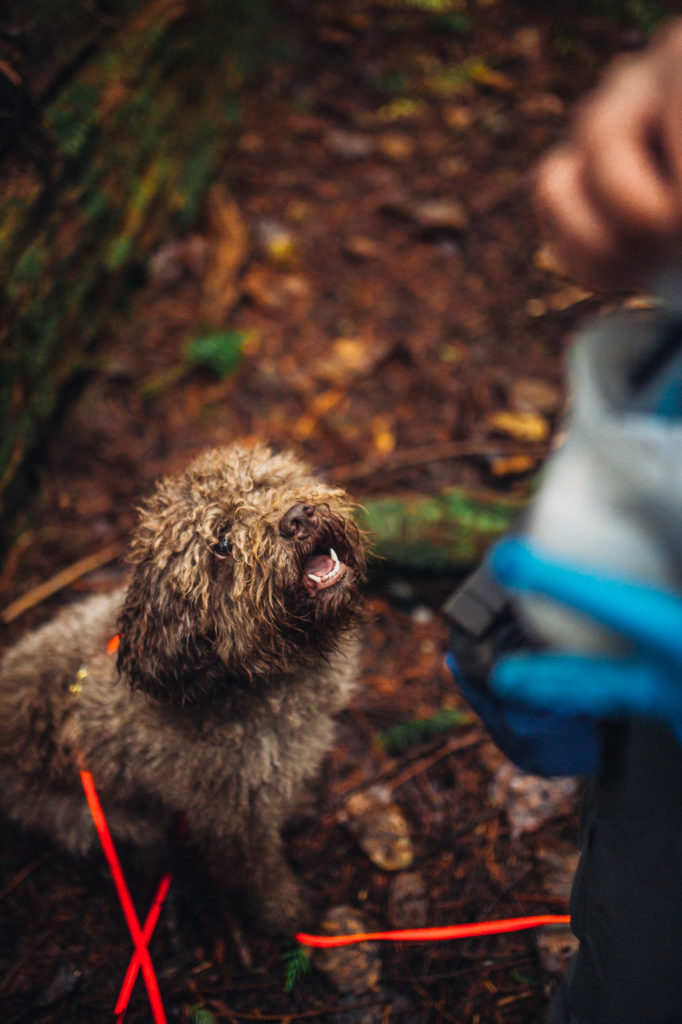
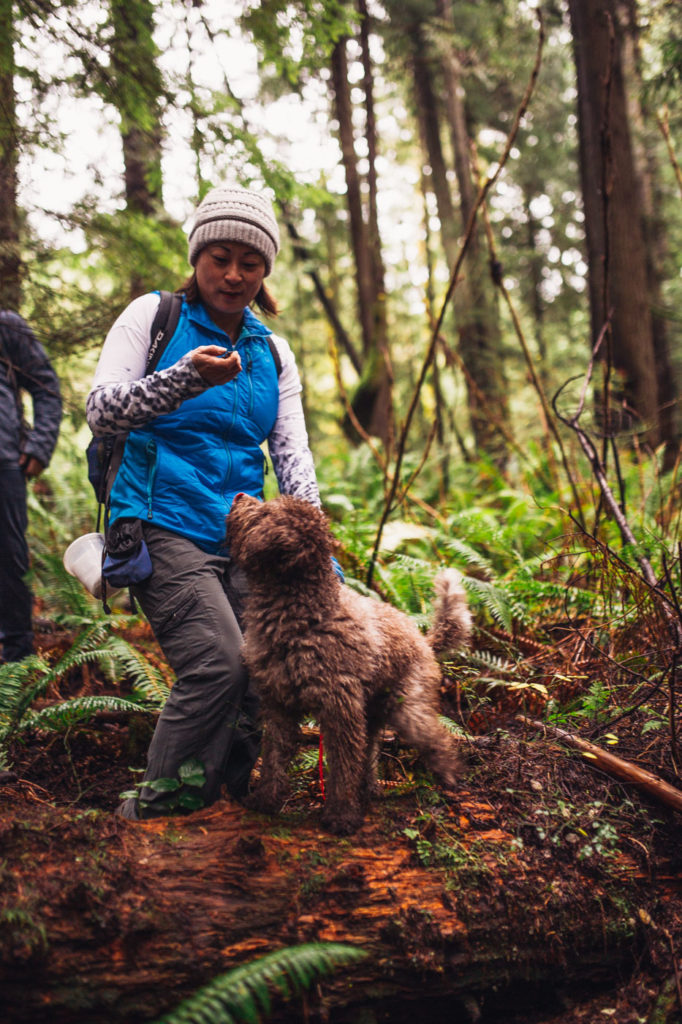
Formerly a public health researcher and health care administrator, Diaz’s first exposure to the industry was through the Oregon Truffle Festival in 2006. Over the past thirteen years, this Eugene-based festival has become an educational powerhouse for would-be foragers, dog trainers, chefs and diners alike. Among its core tenets: advocating for the responsible harvesting of truffles through highly trained dogs like Stella.
“What people don’t realize,” Diaz explains, “is that a truffle, once moved from its fragile ecosystem, cannot return to the dirt to ripen. What’s more, when we use rakes to harvest truffles, we not only disturb unripe truffles (ruining the prospect of a later harvest), but we also risk destroying the natural ecosystem that fosters the growth of tubers in the first place.”
Of course, raising a highly intelligent truffle dog is far more rigorous than purchasing a rake. “Stella has a warm disposition and lovely, soft hypoallergenic curls, which makes people assume she would be an ideal pet for any family,” Diaz says. “While they have a friendly disposition, Lagotto Romagnolos were initially bred for duck hunting because they are a world-class working breed; in other words, they require rigorous physical and mental activity. On the days when I can’t devote a lot of attention to Stella, her excess energy can make her restless. These dogs generally need a job to function at their best.”
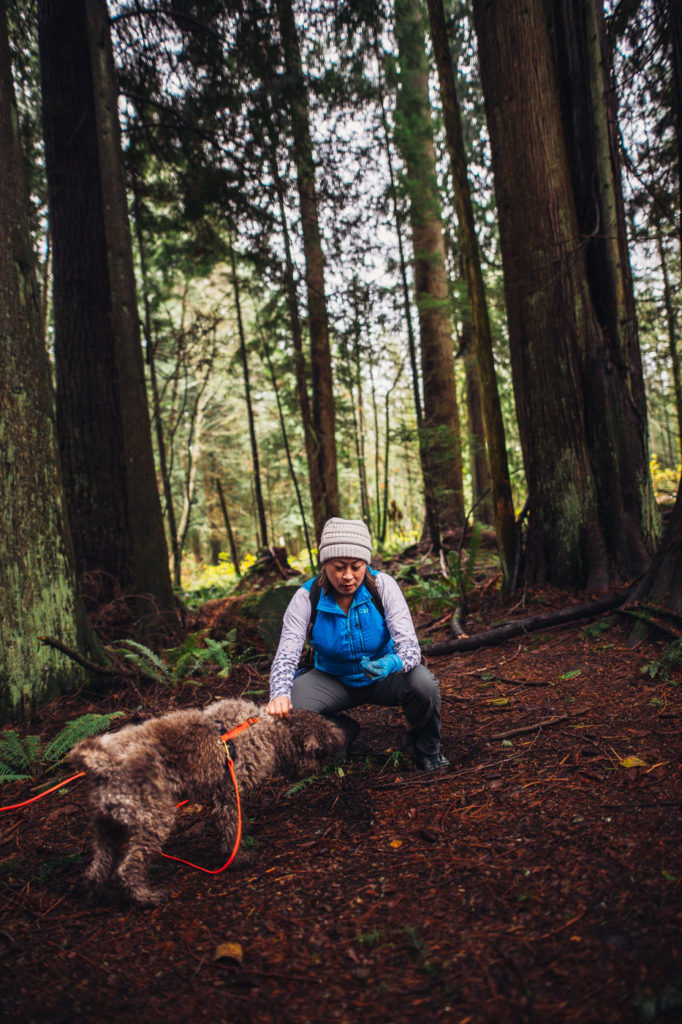
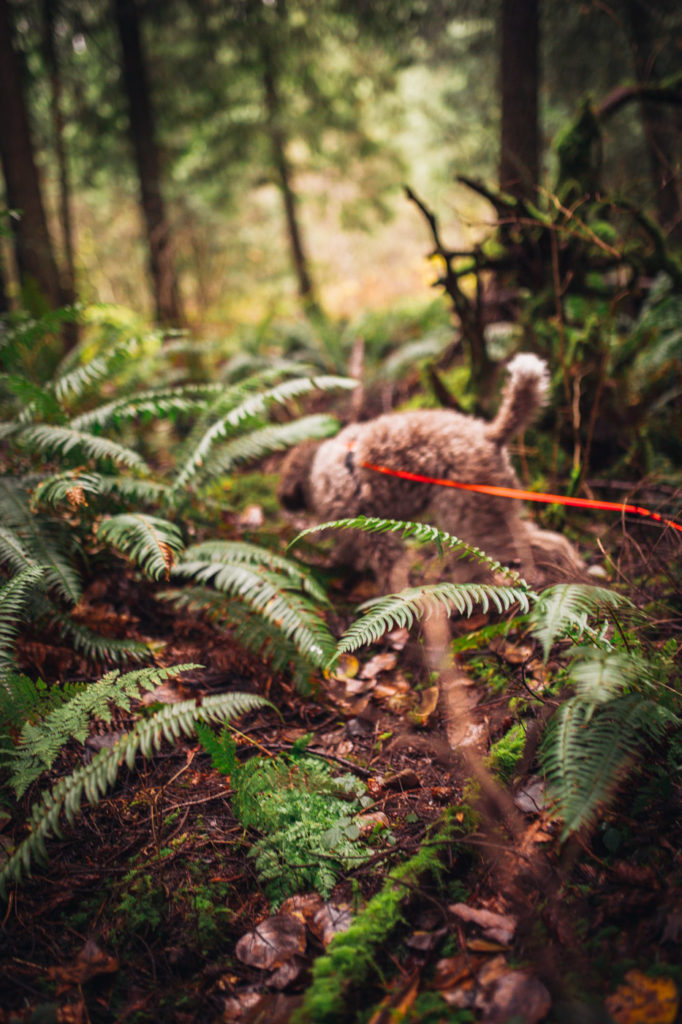
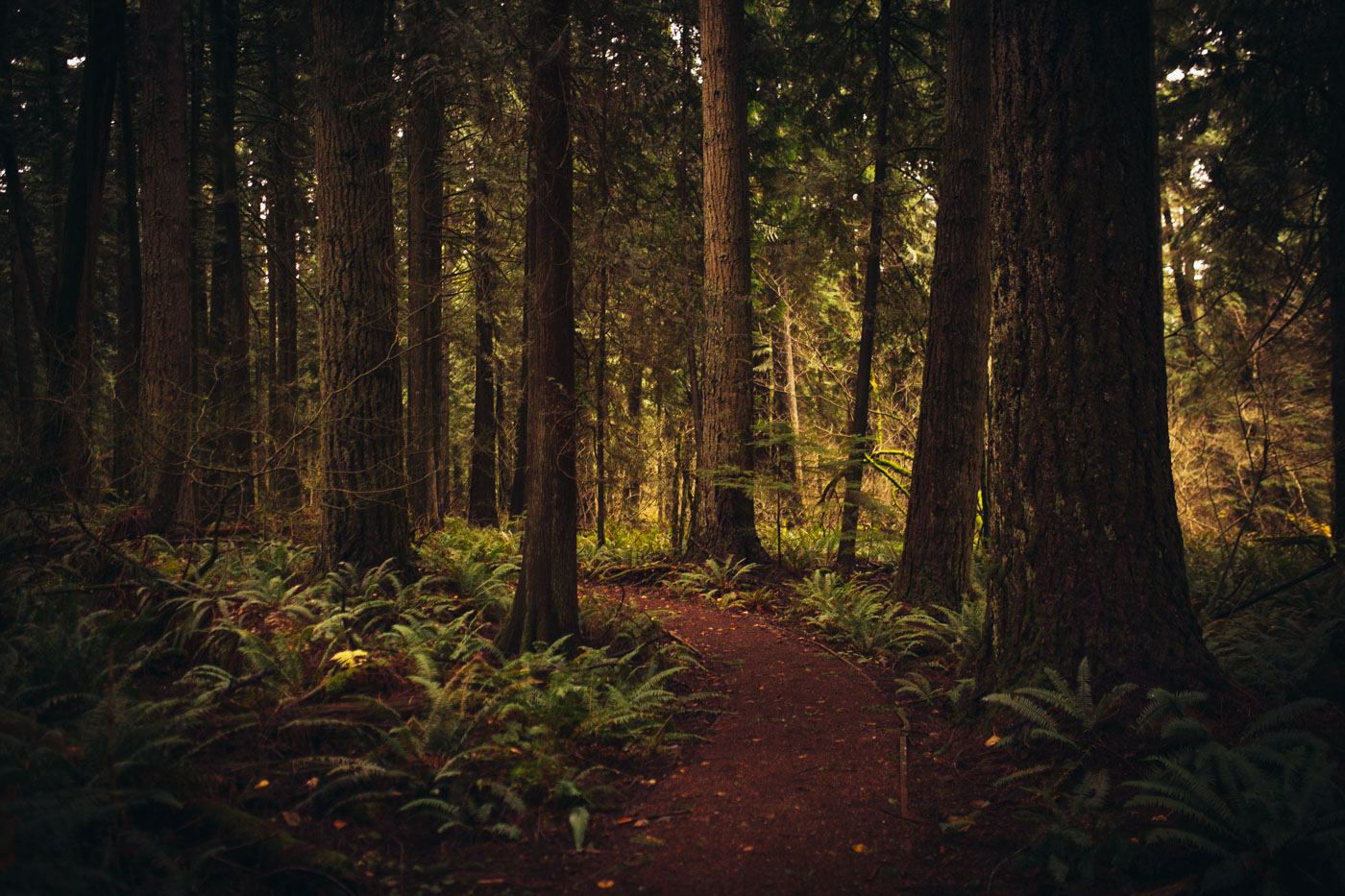
When Stella is on the hunt, that intense work ethic becomes plain. Her nose first points to the sky, twitching steadily until she catches a drift of truffle scent in the breeze. Then, pulling on her lead line—a long, bright orange cord that gives her plenty of room to work—she literally bounds “over the river and through the woods,” often disappearing from sight.
When you finally catch up to her (attempting not to slip, trip or get scraped by the dense brush), you will find yourself in the most untouched, damp and hidden corners of the forest. This is where Stella proves her value tenfold. While it’s certainly possible to find a truffle just off the trail, no rake will lead you to the crevices where the truly prize-winning truffles like to hide.
This lush underbrush is the heart of Washington truffle country, which Diaz notes is quite different than the hunting territory in Oregon, where foragers are forbidden from working on public land. Additionally, Diaz notes, “Oregon tends to offer a greater abundance of truffles, with foragers sourcing pounds versus ounces on such easily accessible property as an overgrown Christmas tree lot.” The two states also differ in the dominant color of truffles, with more white tubers found in Oregon and more black in Washington.
Yet no matter where truffles are sourced, climate plays an essential role. The peak of the season runs from October through March, with the size of the crop responding directly to the rainfall and heat index of the previous months. A hot, dry summer can dramatically reduce what one finds in the woods, as truffles tend to prefer a damp, cool climate. During the best climate years, the season can extend further, with Stella and Diaz having personally sourced truffles every month except August.
Given the dedication—a literal “labor of love”—that the hunt requires, Diaz also emphasizes the importance of educating consumers. “When someone is paying $40 per ounce,” she explains, “I want to make sure they experience the full value of the product.” That includes instructing seasoned eaters of European truffles about the distinct differences between those and the native Pacific Northwest species.
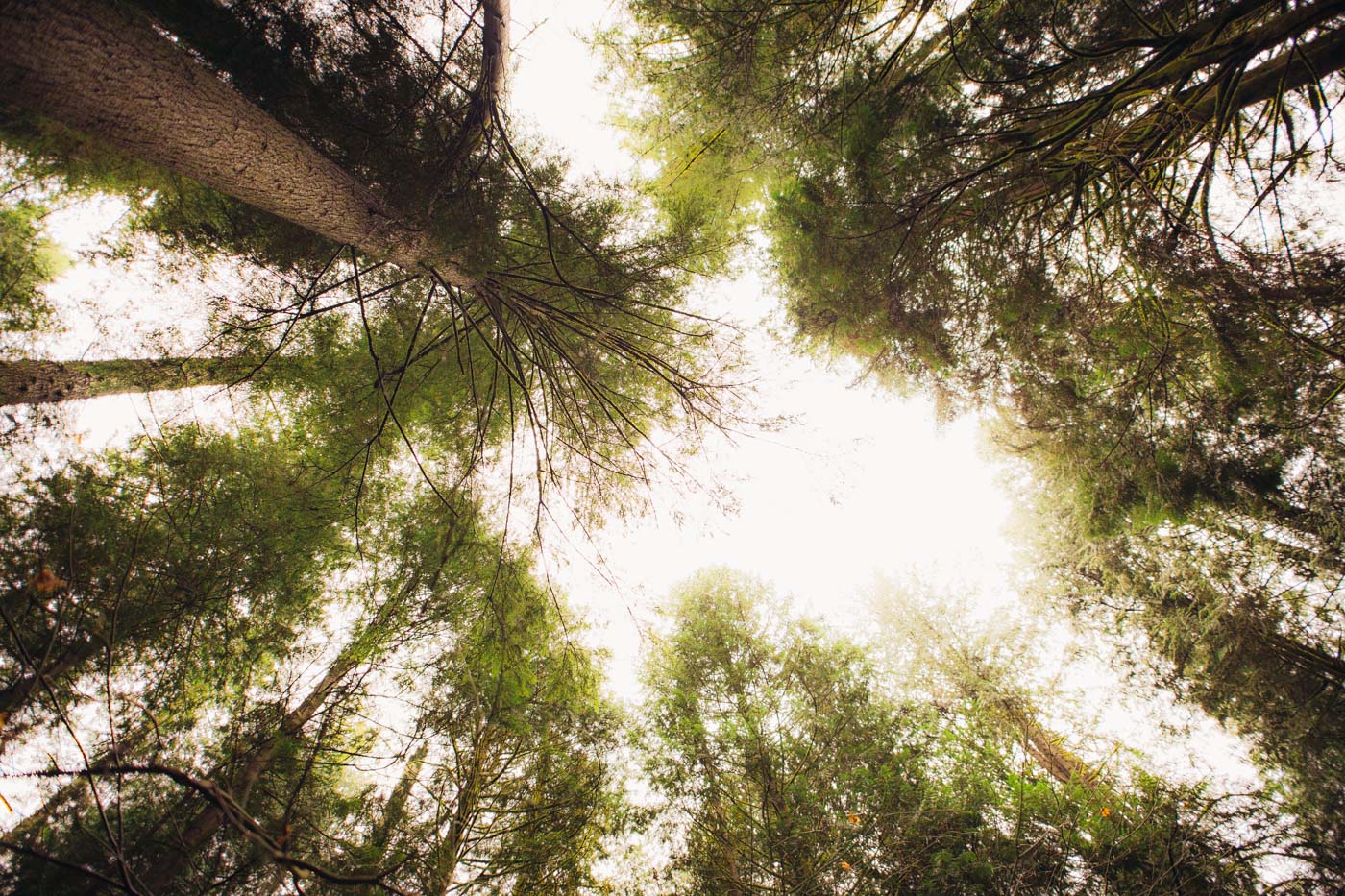
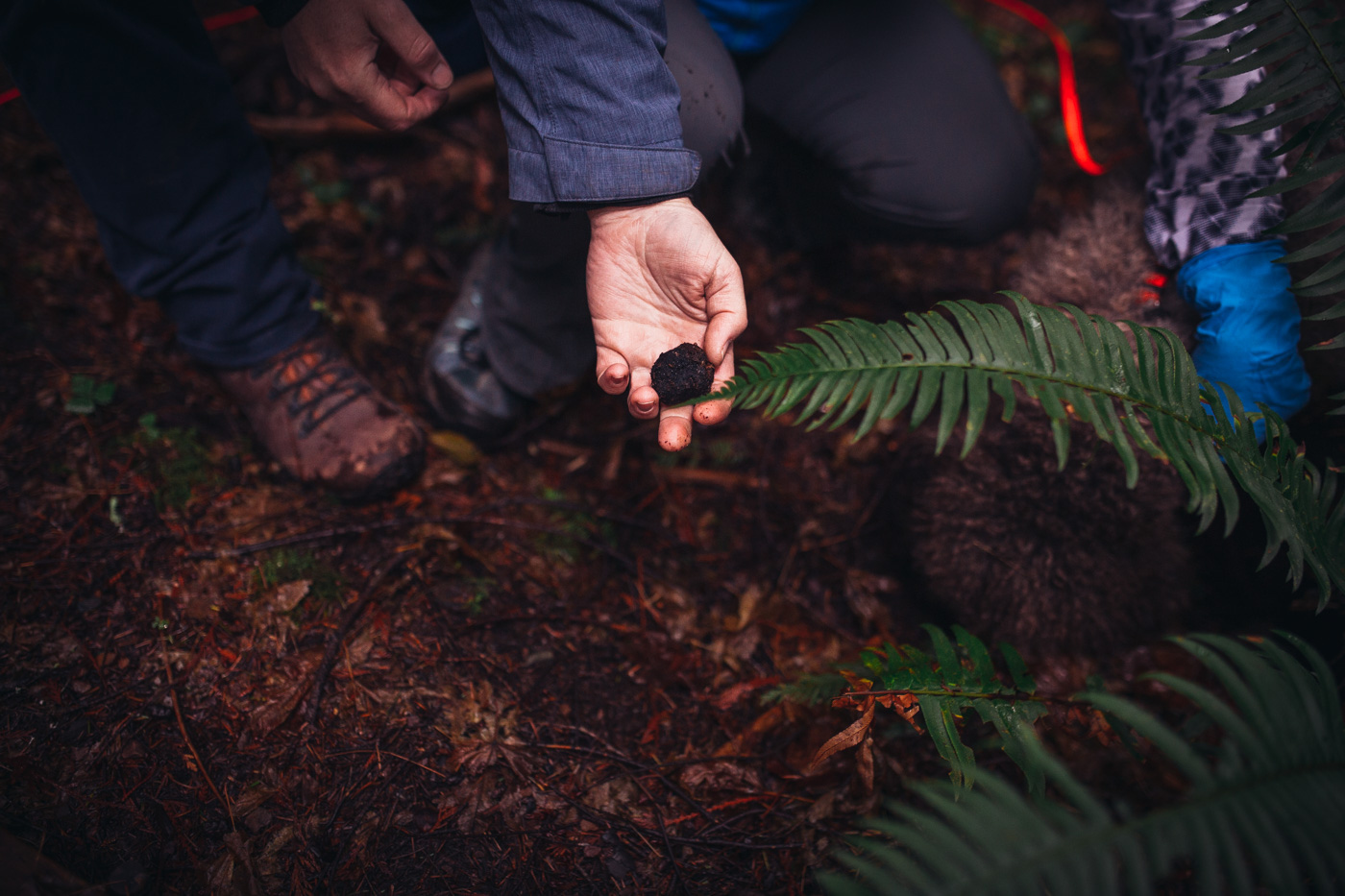
“The difference in flavor and aroma is more dramatic than many people expect,” Diaz explains. “Pacific Northwest white truffles are similar to the Italian white, but with less of the funky garlic or gasoline notes. Ours tend to be fairly nutty, and sometimes even have a note of citrus that pairs well with seafood. In that way, they really reflect the terroir and our proximity to the ocean. As far as black truffles, the Perigords have a strong note of black olives, while ours are more complex. Oregon black truffles have tropical fruit undertones, making them work very well in desserts (which is definitely not the case with their European counterparts).”
On the whole, Diaz’s most important tip is that people shouldn’t cook truffles. Rather, they are best shaved over the top of a dish toward the end of preparation: “Gently warming the truffles is enough to bring out their full spectrum of aromas, and fat is a magnet for the flavor as well.”
Among the chefs Diaz works with is Seattle Chef-Restaurateur John Sundstrom of Seattle’s Lark, who joined us for the morning’s hunt: “I find that European truffles tend to be drier and denser; ours are usually fairly moist, and they intensify over the course of the winter, offering the boldest flavor between December and February. Of course, the greatest advantage we may have is that our local truffles are about one-tenth the price of the European varieties, so I can be more generous with them in a dish!”
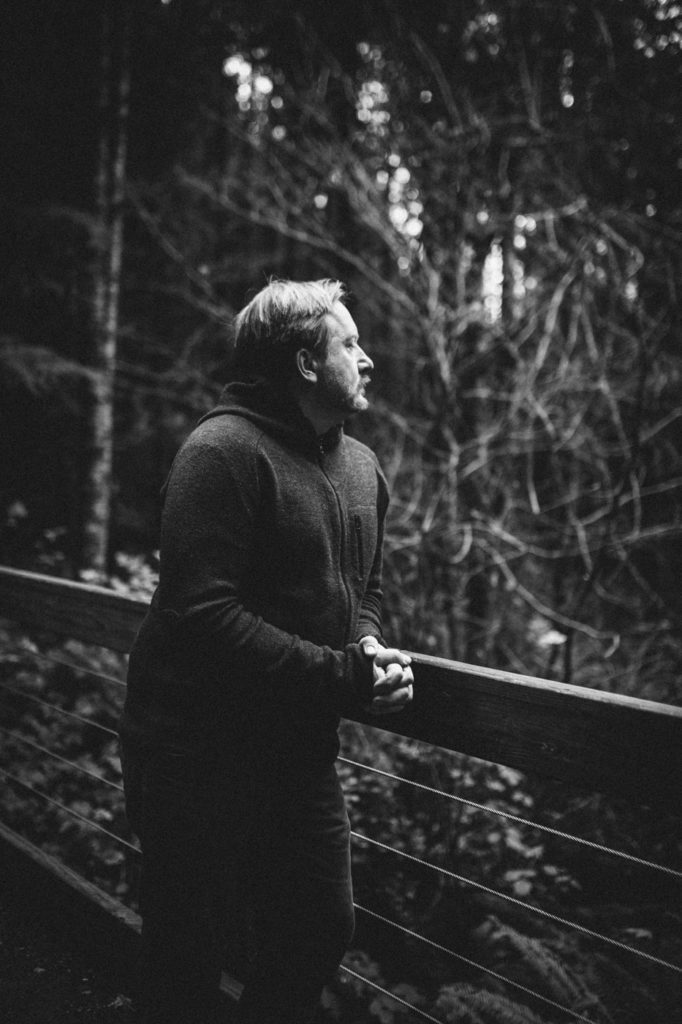
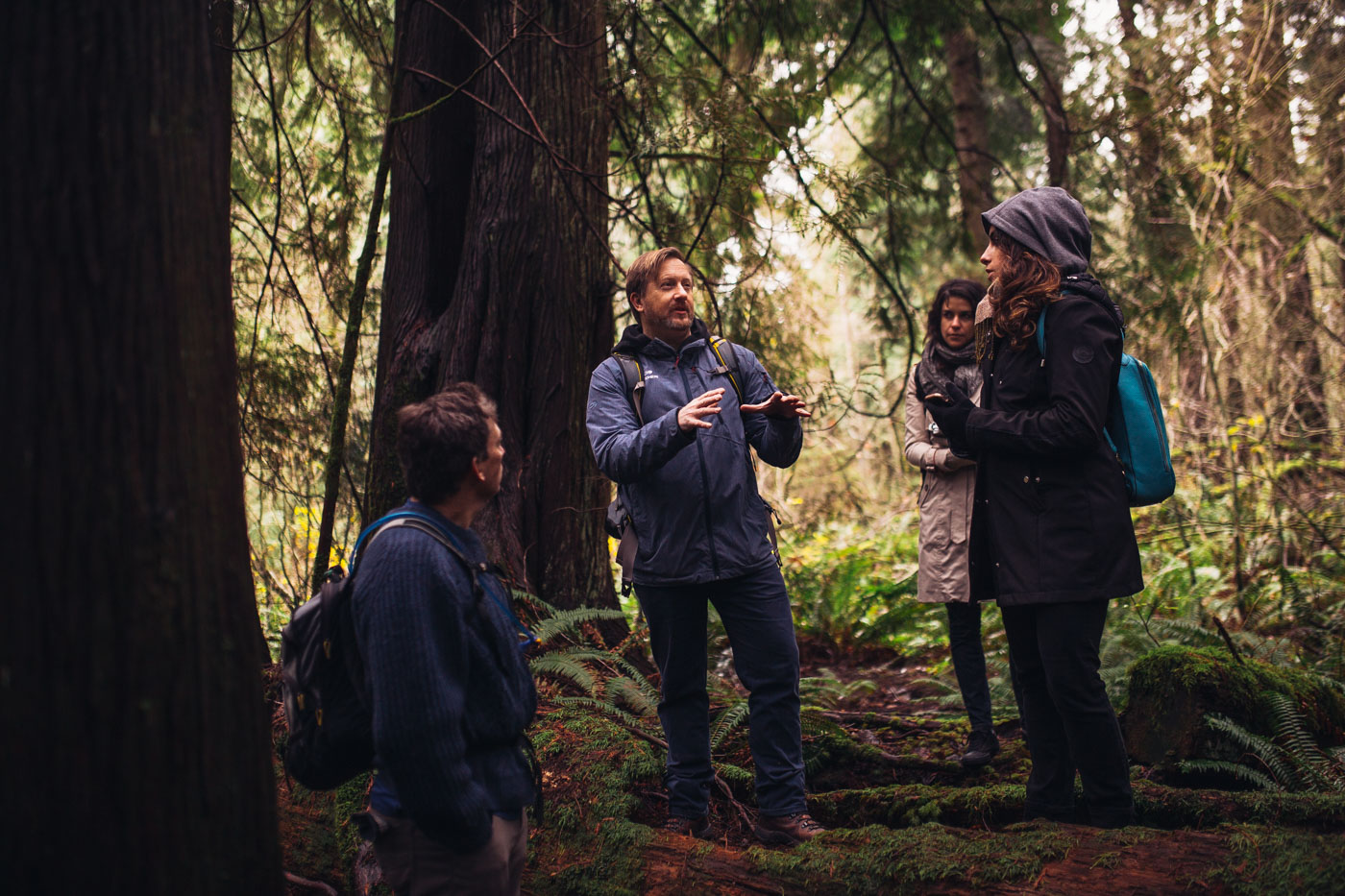
At the end of our days’ hike, Chef John offered us a firsthand taste of the Pacific Northwest black truffle in a campfire batch of scrambled eggs: sweet, earthy, creamy and rich. “They’re also wonderful in simple pastas with butter and cream,” he noted, “as well as more complex dishes like slow cooked pork shoulder with sugar pumpkin and chestnuts.”
As we packed up for the drive back to Seattle, our attention returned to Stella. “Any dog that has a good work ethic can become a truffle dog,” Diaz notes, “so long as they have their nose to the ground and rarely tire of playing fetch.” For those considering testing their dog’s skill, she recommends the Oregon Truffle Festival’s weekend seminar with animal trainer Jim Sanford of Blackberry Farm in Tennessee.
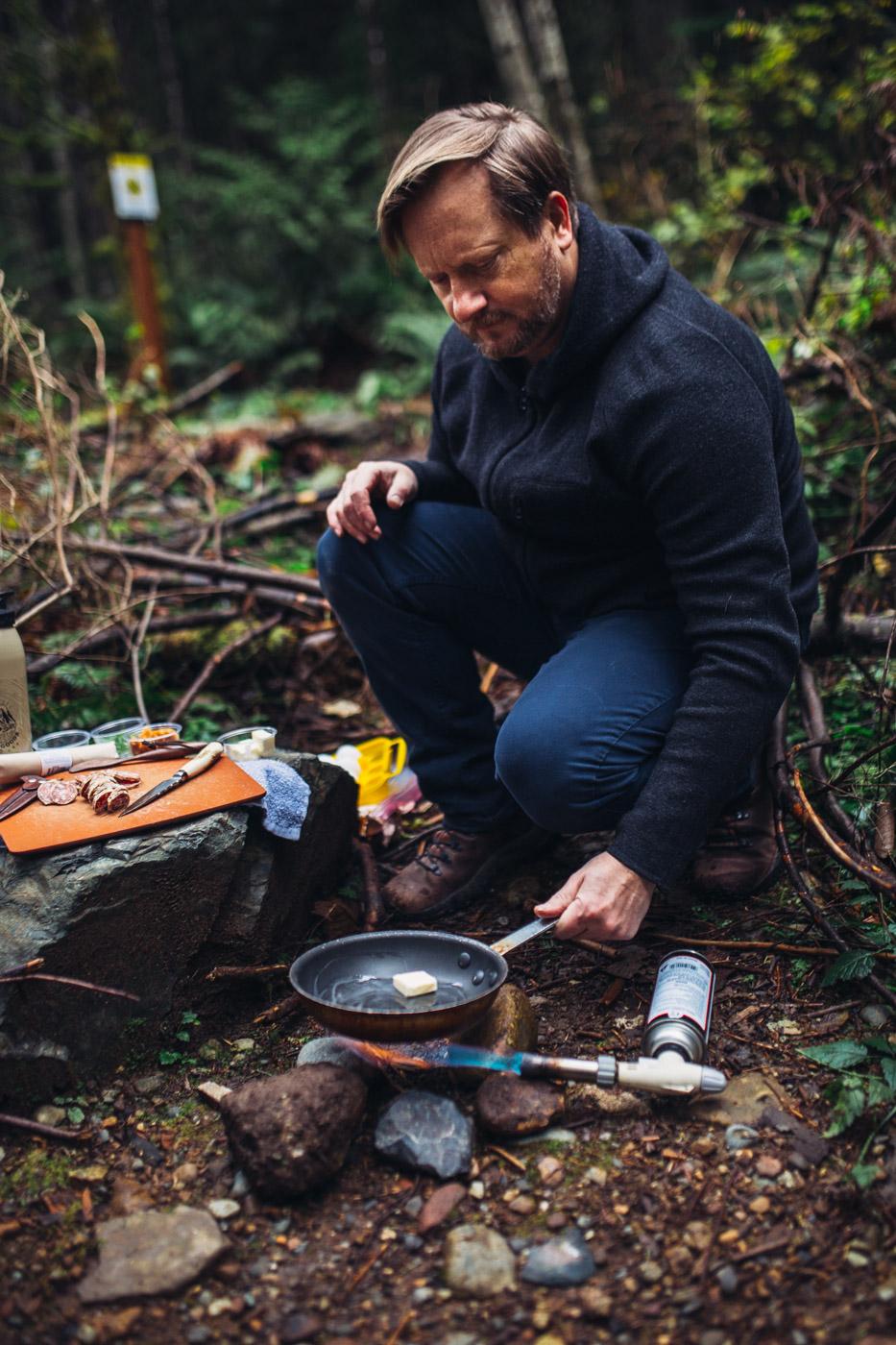
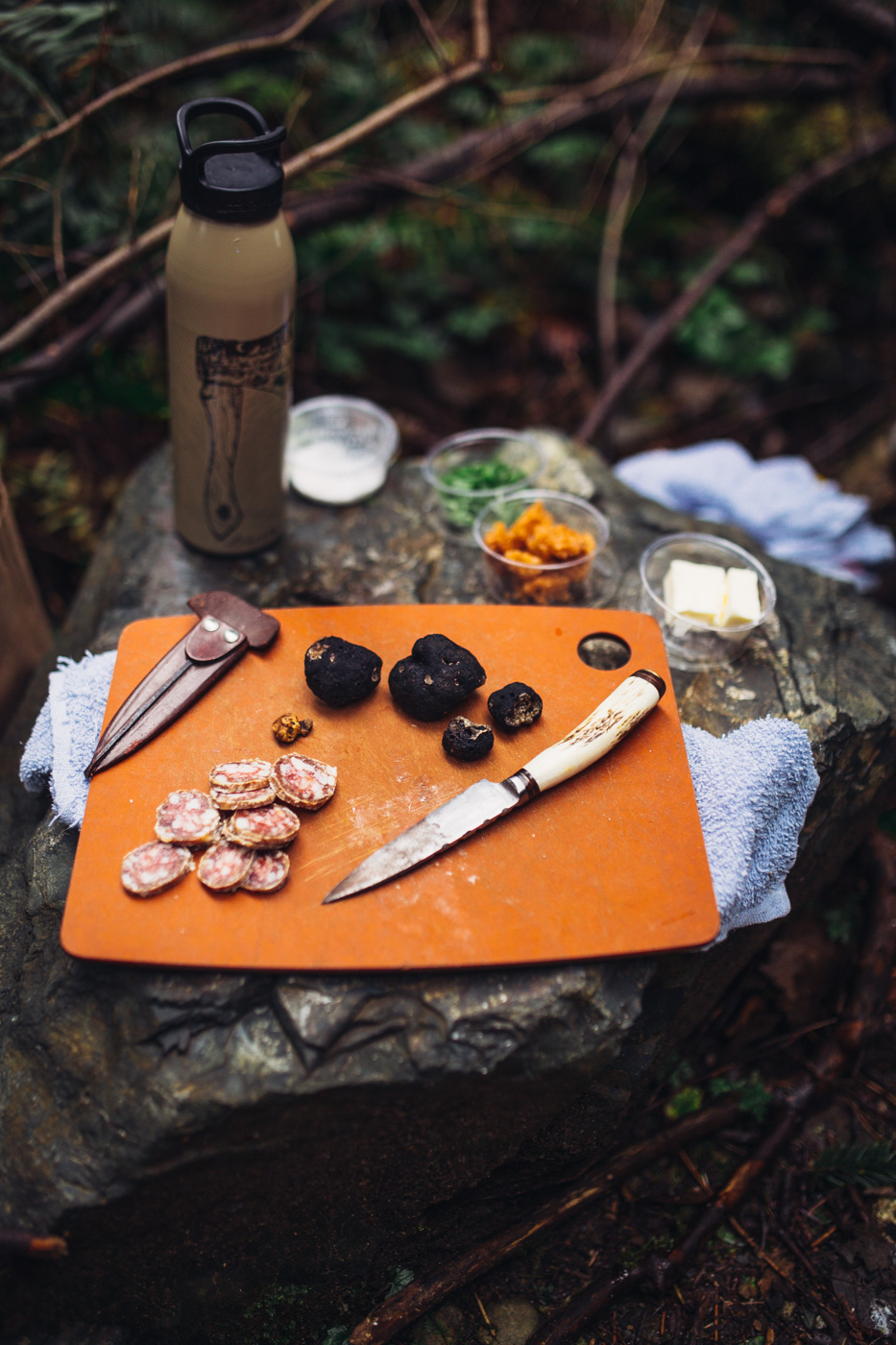
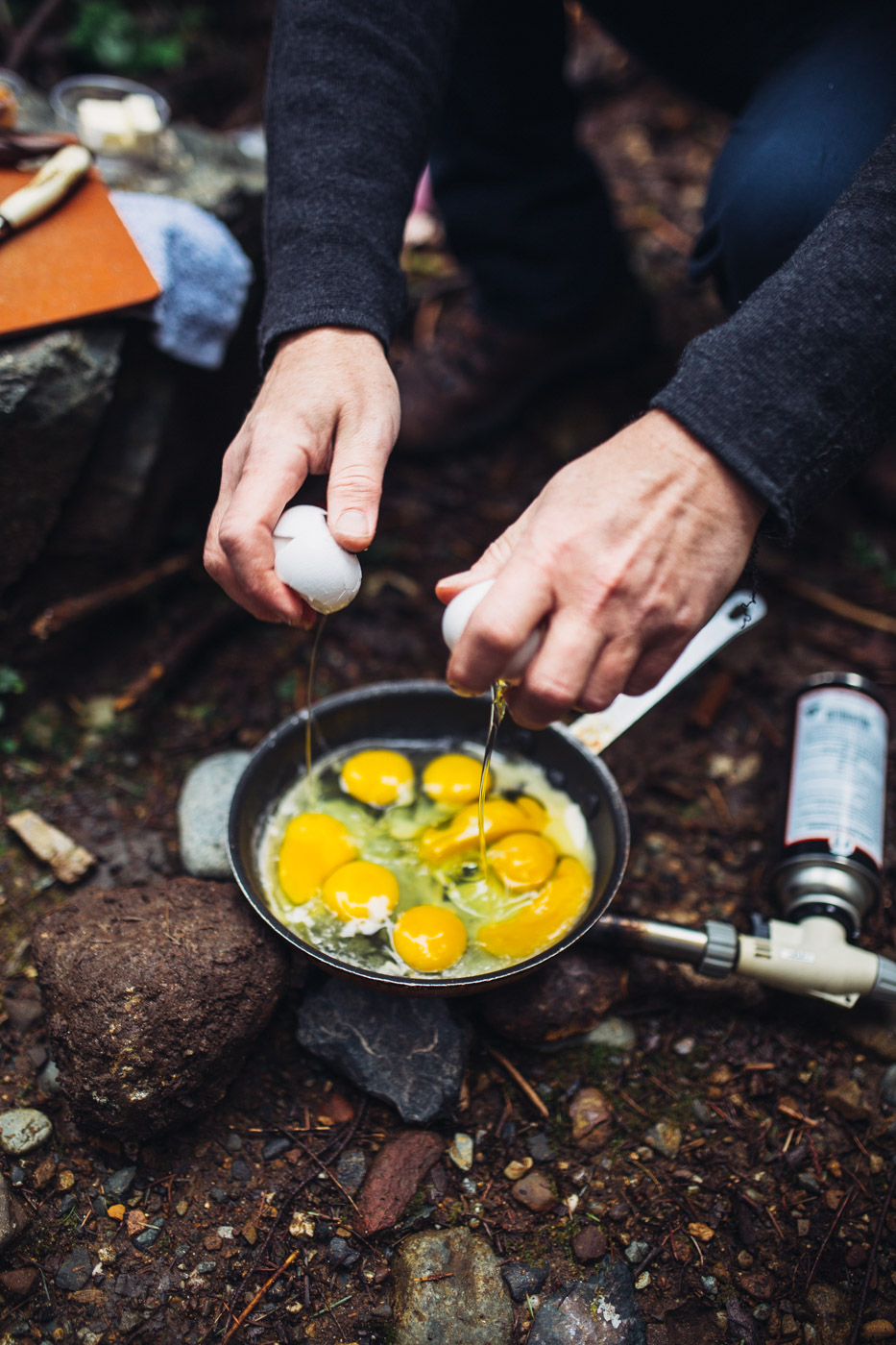
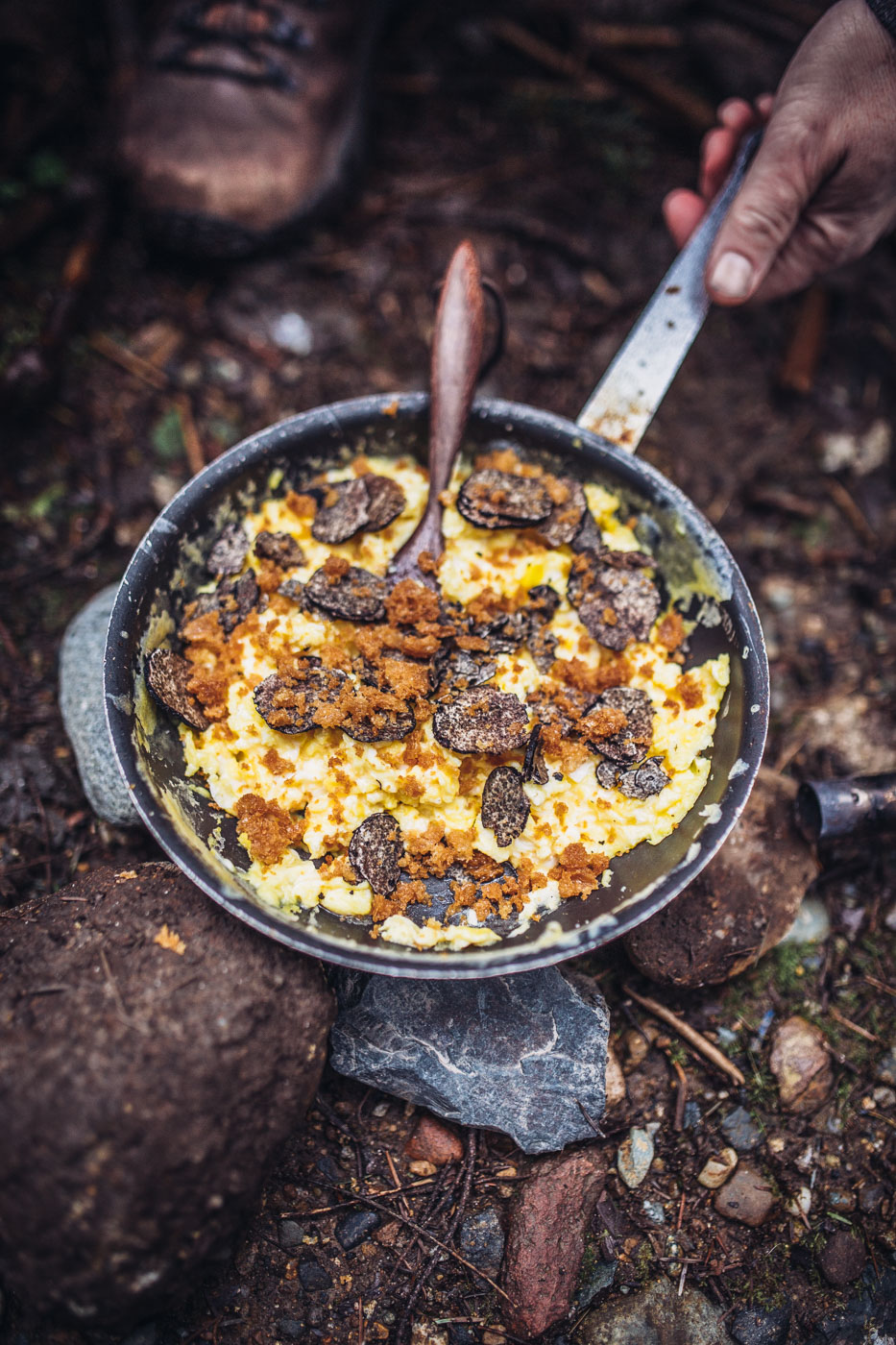
Several more truffles under her belt—and several more treats in her tummy—Stella settled into her crate. In a mere hour, we would be back in the heart of the caffeine- and startup-rich metropolis of Seattle, endless mental miles from the woods. Yet we carried—on our boots and our paws—all the potency of the forest’s microflora. With a little help from Stella, perhaps one day Seattleites might kick up truffles in their own backyards.

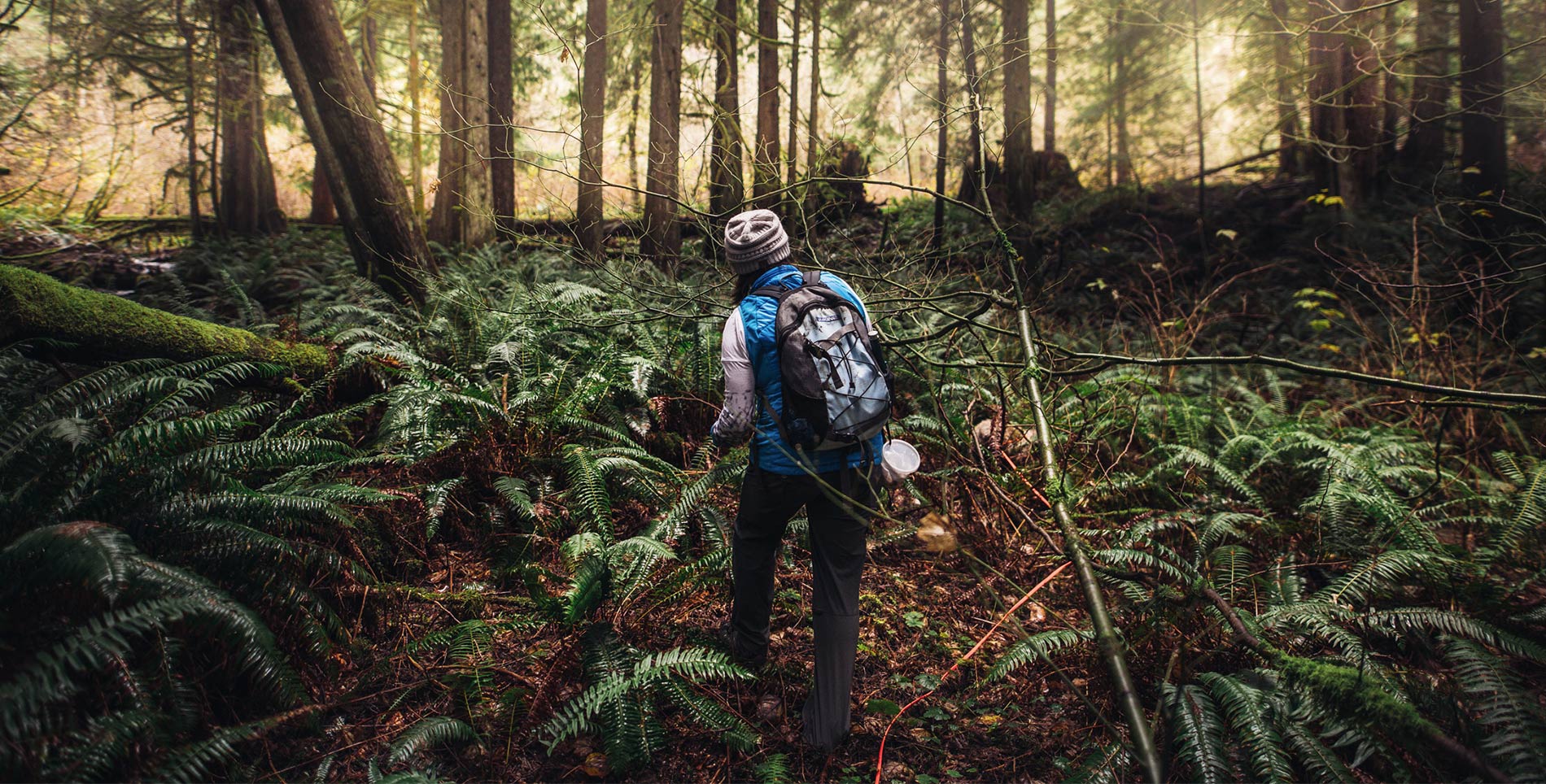

Our comments section is for members only.
Join today to gain exclusive access.